How to Remove Black Folder Icon Background in Windows 10
There’s seemingly a bug in Windows 10 that adds a black background to folders. It doesn’t affect the data inside it in any way; it simply makes the folder look, well… ugly. It may happen because of corrupted files, a problem with the folder thumbnail cache or with the Windows image.
I also faced this issue and after messing around with multiple solutions, I managed to fix it for good. If you are dealing with the same problem, then I can help you fix it using the same methods I have tried. Let’s see which solution works for you.
Read Also: How to Access Restricted Folders in Windows
Solution 1: Restore default icon
This solution only temporarily fixed my problem, as it turned black again after restarting. However, many users have reported that this solution fixed the problem permanently for them. And it is easier to execute. Let’s try this first.
Right-click on the affected folder and select Properties from the context menu. In the properties, move to the Customize tab and click on the Change icon button.
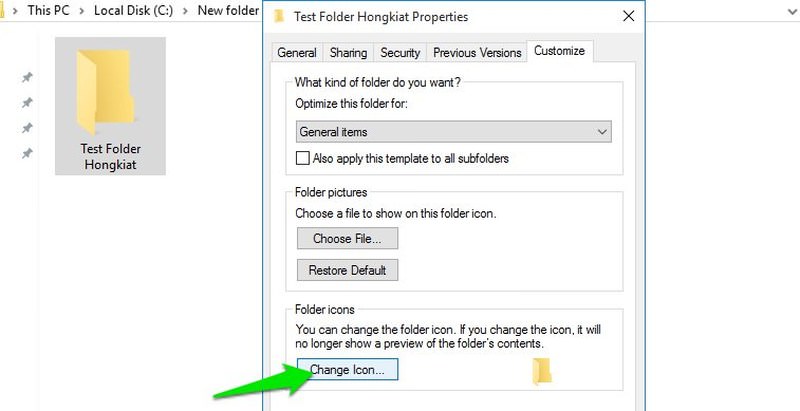
Here randomly select any icon you want and click on OK to select it. Afterward, click on OK again to apply the changes.
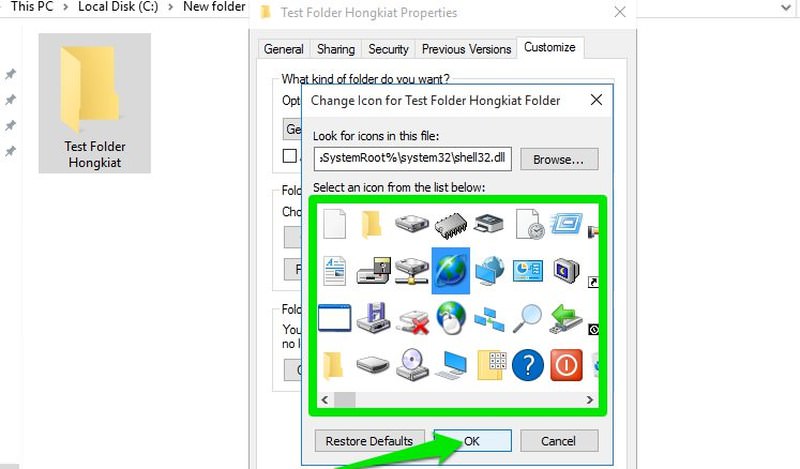
Now go back to the same Change icon option, and this time click on the Restore Defaults button instead. When you will click on OK, the default icon will be restored and most probably the black background issue will be resolved as well.

Solution 2: Uncheck Read-only attribute
There is a chance that the Read-only attribute of the folder may be causing the folder to show an icon with a black background. Simply remove the Read-only attribute and see if it fixes the problem.
Right-click on the folder and select properties from it. Here uncheck the checkbox next to Read-only in the Attributes section. When you will click on OK, the folder icon may be fixed.
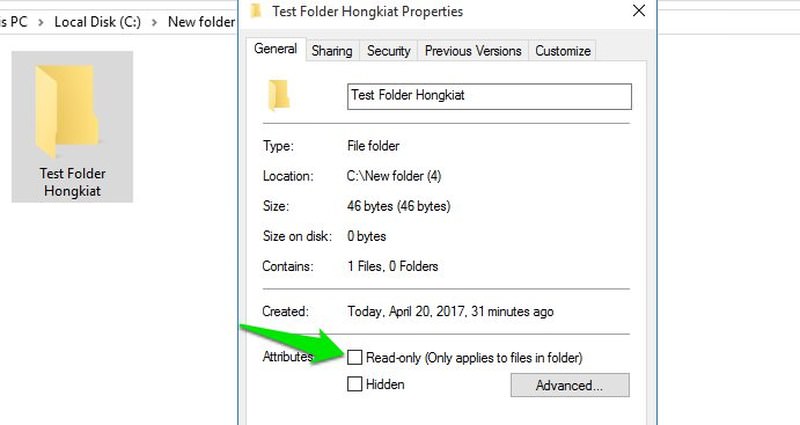
Solution 3: Delete thumbnail cache
Corrupted thumbnail cache seems to be the most common reason for this problem. Deleting thumbnail cache and resetting it solved this problem for many users, including me. There are many ways to delete thumbnail cache, but I find using the Windows Disk Cleanup tool to be the easiest.
Press Window + R keys and types cleanmgr.exe in the Run dialog. When you will hit OK the Disk Cleanup tool will open up. The system drive (C drive) will already be selected in it, simply click the OK button on it to start scanning.
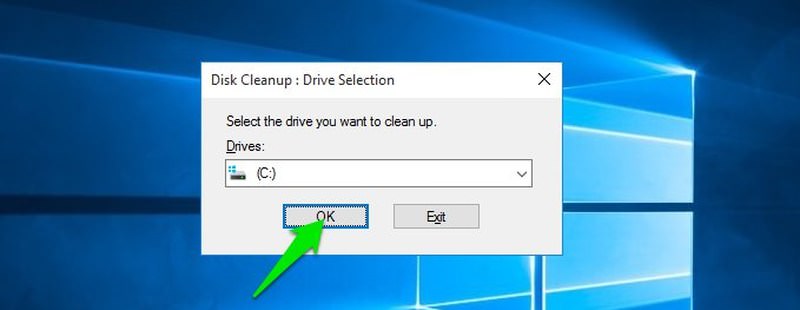
After scanning, it will show a list of data that can be deleted to save space. Here scroll down and check the checkbox next to Thumbnails, and then click on OK. A prompt will show up, confirm it to delete all the thumbnail cache. Afterward, restart the PC and see if the black background is gone or not.
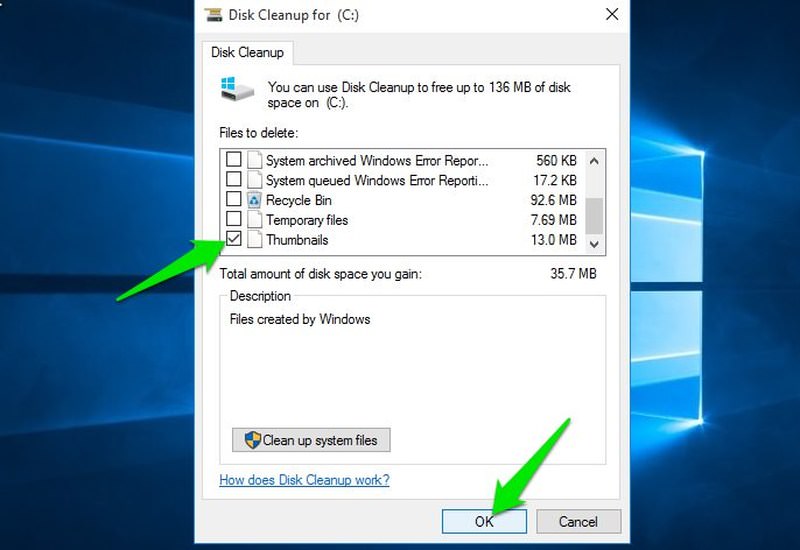
Solution 4: Run System File Checker scan
If the problem persists, then it could be due to a corrupted or missing system file. Windows built-in System File Checker (SFC) scan can look for any corrupted or missing system files and automatically recover them (if possible).
To run the SFC scan, right-click on the Start menu icon and select Command Prompt (Admin) from the list.
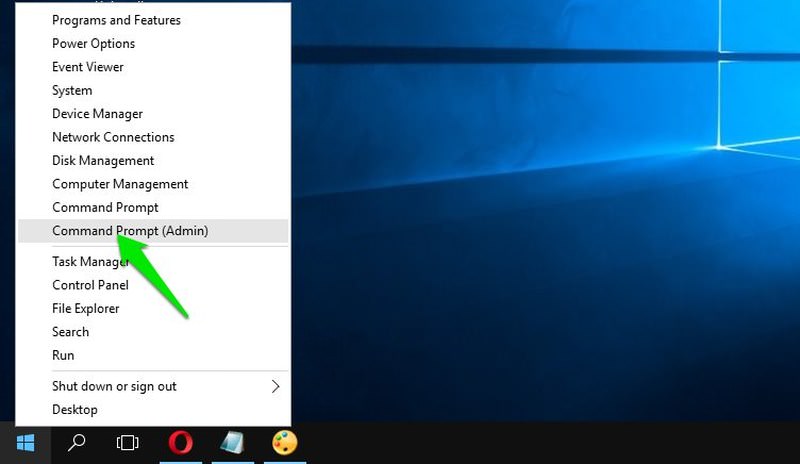
This will open a command prompt window where you need to enter the command sfc /scannow. Once you will press Enter, the scan will start. It can take a few minutes to complete the scan, so hold on tight. Once finished, it will show if there were any corrupt files and whether they were fixed or not.
Read Also: How to Fix Corrupted Windows System with System File Checker

Solution 5: Run DISM scan
A problem with Windows images can also make the folder background turn black. You can run DISM (Deployment Image Servicing and Management) scan to see if there is any problem and fix it.
To run the scan, you will have to run a command from an elevated command prompt window. Follow the process mentioned in the solution #4 to open an elevated command prompt window.
In the command prompt enter the command DISM.exe /Online /Cleanup-image /Scanhealth. This will scan for any problems and let you know if it finds any.

If the above scan reports any problem, then you can use another command to fix itm. After scanning, enter the command DISM.exe /Online /Cleanup-image /Restorehealth and hit enter. The scan will run and try to fix problems with Windows images and their components.
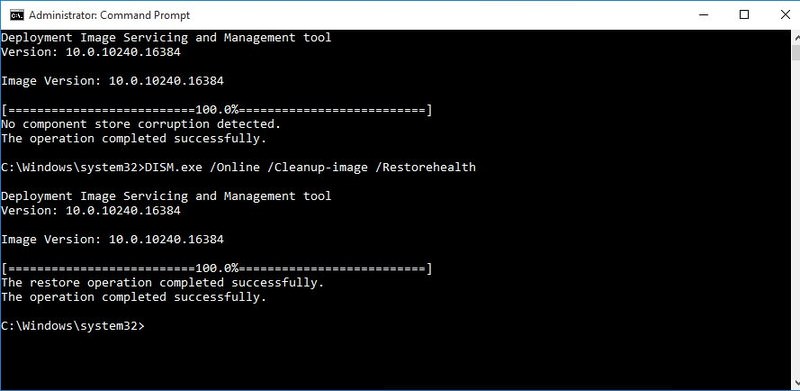
Both scans can take a bit of time (10-15 min). Once finished, restart your PC and see if the problem is fixed.
Keep Windows updated
The above solution should fix the problem permanently, or at least for the time being. As this problem seems to be a bug, there’s a chance one of the Microsoft updates may resolve this problem for good. As far as I know, there hasn’t been an update that solved this problem (as of writing). Although a future update may fix the problem, so keep your operating system updated.
Ending thoughts
Resetting the thumbnail cache usually solves the black folder icon background problem. Although I will recommend you to try to restore the default icon first as it’s easier to do it and you won’t have to go through thumbnail regeneration process if it solves the problem. And of course, you can run SFC and DISM scan for fixing any corrupted files.
Do let us know in the comments if you managed to solve the black folder icon background in Windows 10, and which method worked for you.